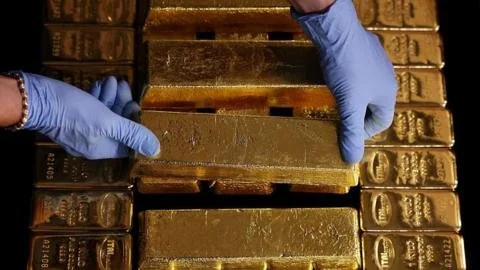Gold Soars Beyond $4,000: A Safe Haven in Turbulent Times
The price of gold has reached an unprecedented high of over $4,000 an ounce, driven by rising global economic and political uncertainty. This surge marks the largest rally since the 1970s, with prices climbing around a third since April, primarily fueled by US tariffs introduced by President Donald Trump, which have disrupted global trade. Analysts highlight that the ongoing US government shutdown has also sparked concerns due to delays in key economic data, further pushing investors towards safe haven investments like gold.
The Bank of England (BoE) has pointed out the risks associated with AI tech companies, suggesting that their valuations might be overstretched, potentially leading to a sharp market correction. The spot gold price peaked at $4,036 during trading sessions, and its futures have shown similar levels as of mid-October. The current government shutdown is perceived as a tailwind for gold prices, recalling previous increases during such shutdowns.
Gold’s remarkable rally has been described as beyond analysts’ expectations, linked not only to uncertainty but also to a weaker dollar and an influx of retail investors. Central banks have significantly increased their gold purchases, accumulating over 1,000 tonnes annually since 2022, indicating a strategic shift from US treasuries. Noteworthy buyers include Poland, Turkey, India, and China.
Investment in gold ETFs has also surged, with approximately $64 billion invested in these financial products this year. Key figures in the precious metals market, like Gregor Gregersen, report doubling customer numbers, as investors seek gold as a safeguard amid global economic turmoil. While many believe that gold will maintain an upward trend for at least five years, potential declines could occur if interest rates rise or if geopolitical stability returns.
The relationship between inflation and gold price continues to be significant, as any resurgence in inflation could lead the Federal Reserve to increase rates, causing gold’s value to drop. Trump’s pressures on the Fed regarding interest rates have further complicated market confidence. The BoE’s assessment acknowledged the risks associated with over-reliance on a few major tech companies, similar to the dotcom bubble of the early 2000s, which raises concerns about the potential for drastic market adjustments.
Investors remain keenly aware of the balance between risk and reward in today’s financial landscape, and gold’s role as a hedge against uncertainty has regained importance as potential systemic risks loom.

